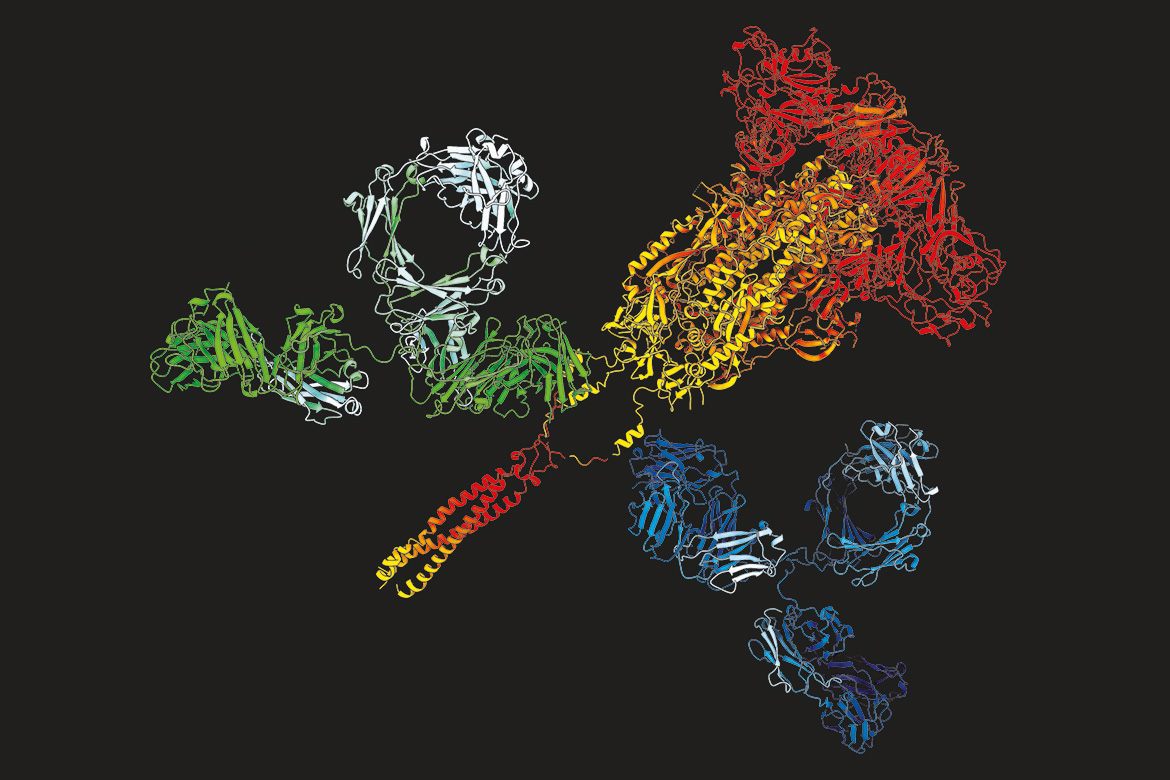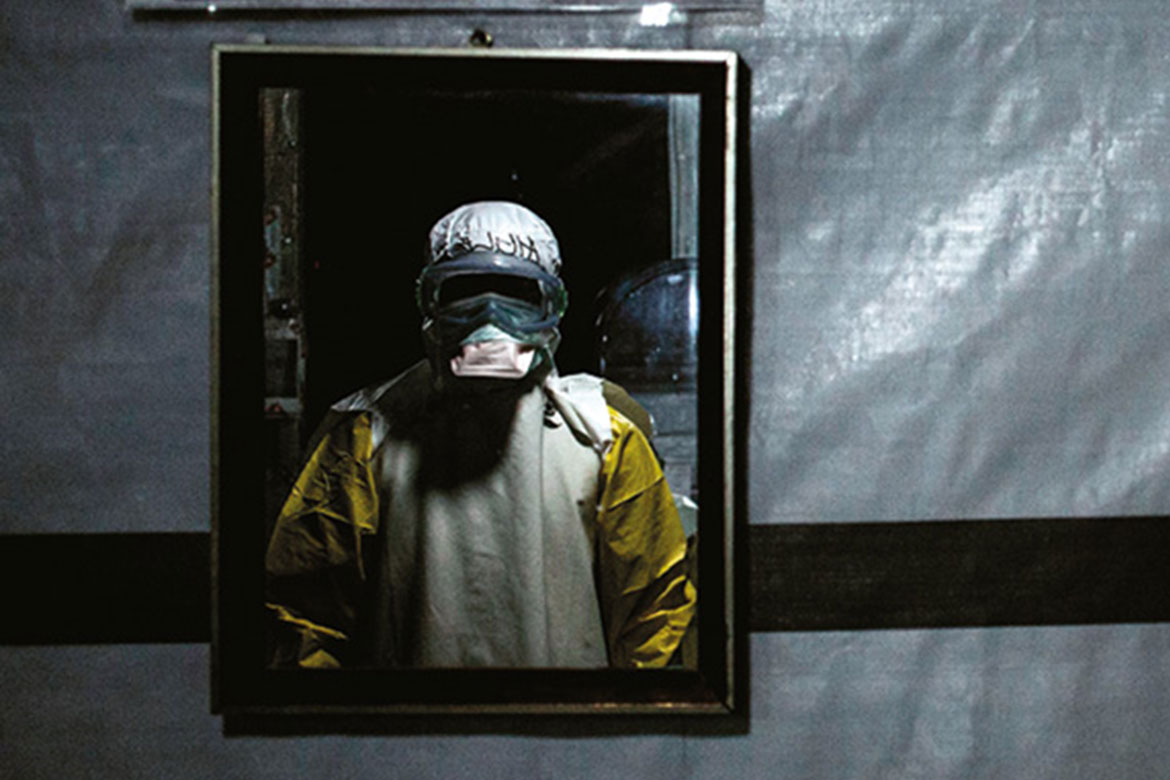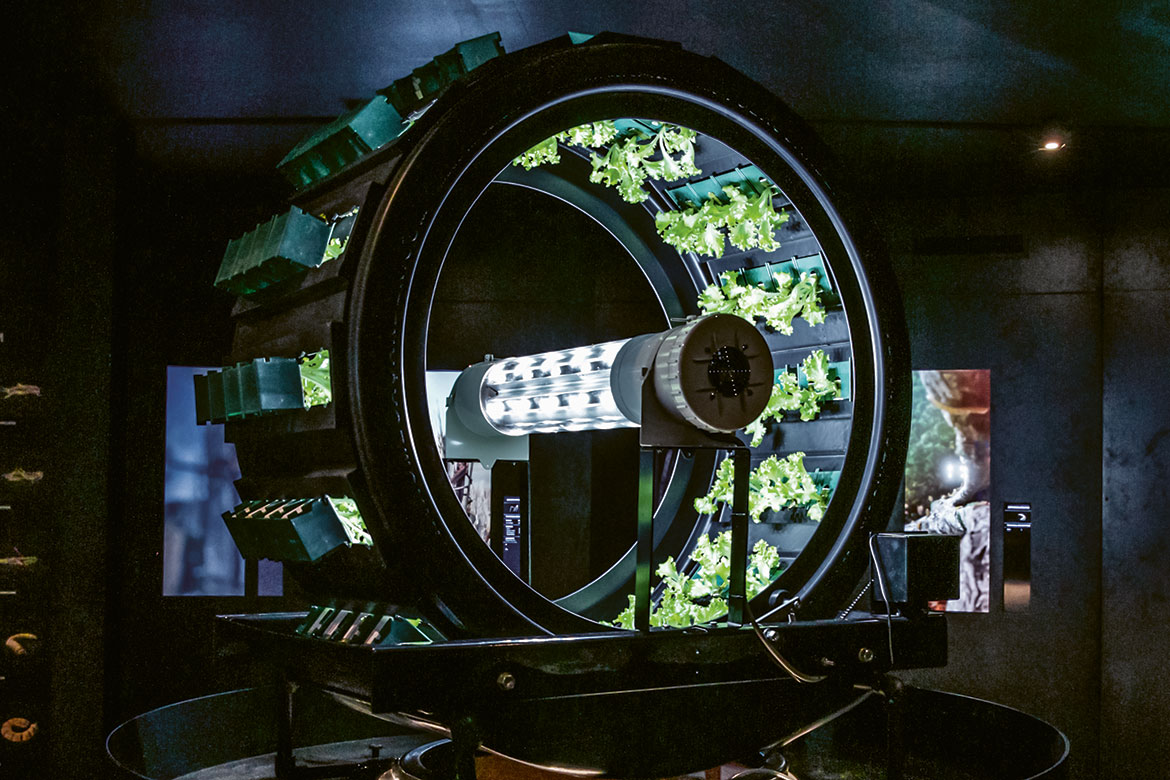IN THE PICTURE
Taking the fight to the Corona spike
Coronaviruses can be beautiful, as we can see from models of spike proteins and antibodies. They’ve been created by a postdoc using electron beams and X-rays.

Two newly developed antibodies (green and blue) block the spike protein on the ‘crown’ (red). Illustration: Maximilian Sauer
“What the picture shows isn’t what you actually see under the microscope. I’ve compiled it for non-scientific observers”. Maximilian Sauer is a postdoc at the University of Washington on a scholarship from the Swiss National Science Foundation. Even before the current pandemic, he was on the hunt for antibodies for the coronaviruses that trigger SARS and MERS.
In his picture here, the spike protein of the MERS coronavirus is depicted in red. It is a spike on the crown (‘corona’) that has meanwhile become iconic. The virus uses these spikes to open up human cells. Sauer added the red extension from a model of the current SARS-CoV-2. The two antibodies (green and blue) that are grasping the spike also had to be largely added by Sauer. His precise data are only valid for the contact points. This suffices for him to determine that the antibodies pull apart the protein strings at the collar of the spike, thereby blocking its opening mechanism. “I try to make the pictures as detailed as possible in order to explain the function of the antibodies precisely”, he says.
Proteins are so small that they are no longer visible under an optical microscope. Sauer needs electron beams or X-rays for this, and shoots them at samples that he has prepared over several weeks. This was how he was able to find the first antibodies that do not attack the head of the spike, where all viruses are different, but at its collar, where there is not much room for adaptation. This new class of antibody might be used if mutations of the spike protein lessen the impact of vaccines.
“It was frustrating that I couldn’t use my project to prevent the pandemic. Nevertheless, it was naturally a really lovely moment when I discovered something new. One’s feelings are always a bit bipolar”. Just as ‘bipolar’, in fact, as the spike itself, which combines aesthetic beauty with biological terror.




